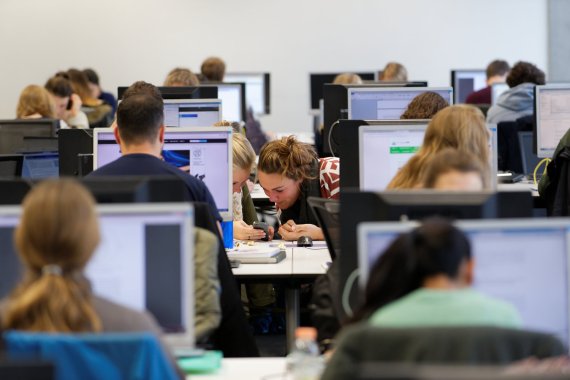A beginner’s guide to Dutch academia is the title of the English booklet that was published Monday 4 June by The Young Academy. The forty pages summarise the slang and system of Dutch science.
Or at least, in as far as that is possible. The introduction contains a disclaimer: the academic world is a ‘moving target of multiple dimensions’, which means that some rules and structures may vary between universities and academic fields. And throughout the years, of course.
It is good to know how the grading system for students works in the Netherlands, for example. An 8 is a high grade, an 8.5 or higher is the equivalent of an A+ in the United States. A 3 or lower is hardly ever awarded, and a 10 is also rarely seen.
‘Zesjescultuur’
The guide is peppered with citations from an anonymous survey among scientists about the things that they found most striking in the Netherlands. One of them warns for the zesjescultuur (‘scraping by sixes’) among students: ‘You will rarely have discussions about why you awarded a 9 and not a 10, but they will fight tooth and nail to get that 6 in’, the guide says. Another person struggled to get used to the quick use of first names among the Dutch.
But there are mainly many practical aspects being discussed: where does one apply for research funding, is it possible to bring a partner to the Netherlands, what of parental leave, etc. The guide also has a very practical list with abbreviations that can come in handy: CAO, ECTS, OCW, VSNU, WHW…
One of the authors is Utrecht-based professor Christian Lange, who originates from Germany. He has been working in the Netherlands for six years. Lange: ‘I would have very much appreciated such a booklet upon my arrival here.’
Feeling at home
It often takes a few years to understand the system and feel at home, he says. ‘When you come here, you are overwhelmed by tasks and barely have time to explore the system. You have to teach, become a committee member somewhere… I still have blanks here and there, but it has improved so much already.’
The idea is to update the guide periodically; once every three years, for example. The Young Academy hopes that the guide will be distributed by the international offices of the universities, among other places.
On a side note, Lange does recommend all international researchers to learn Dutch. ‘It absolutely helps in science communication and in the valorisation of one’s research. And besides, the important meetings are always held in Dutch anyway.’

